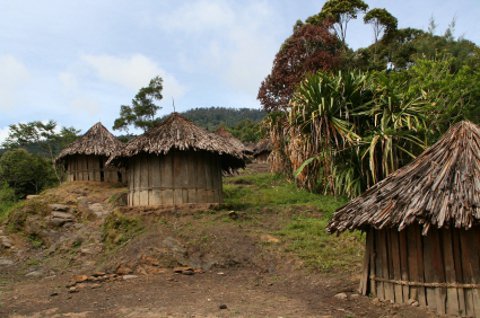
|
Published: 5 September 2011
Protected areas not so effective in protecting tropical forests
Tropical forests designated as strictly protected areas have annual deforestation rates much higher than those managed by local communities. The results of a recent study challenges the long-held belief that the best way to conserve forests is to lock them away in protected areas.1
‘Our findings suggest that a forest put away behind a fence and designated “protected” doesn't necessarily guarantee that canopy cover will be maintained over the long term compared to forests managed by local communities – in fact they lose much more,’ said Manuel Guariguata, Senior Scientist with the Center for International Forestry Research (CIFOR) and a co-author of the paper, along with researchers from Mexico and Spain.
The paper underscores earlier findings by other scientists that show that greater ‘rule-making autonomy’ at the local level is associated with better forest management and enhanced livelihoods.
The research compared peer-reviewed case studies in 16 countries across Latin America, Africa and Asia. It found protected areas lost, on average, 1.47 per cent of forest cover per year compared to just 0.24 per cent in community-managed forests.
With billions of dollars being channelled into Reducing Emissions from Deforestation and Degradation (REDD+) – a climate change mechanism that pays developing countries to protect the world's forests – the paper suggests that community-managed forests could be a more effective solution to reducing deforestation and ensuring the sustainable use of forests while benefiting local livelihoods.
‘We are not arguing that parks in tropical forested areas are useless. Instead we argue that community-managed forests are a key part of the overall forest conservation package,’ Guariguata said.
‘After decades of expanding protected areas, the need to incorporate human rights concerns and equity into management objectives is now unquestioned. REDD+ schemes could provide an opportunity to recognise the role that local communities play in reducing deforestation.’
Each year, more than 13 million hectares of forests are lost globally, an area roughly the size of England. Community-based forest management now comprises 8 per cent of the total of the world's managed forests, and up to 20 per cent of Latin America's forests.
‘There are specific issues involving tenure rights, government regulations and local and international market forces that influence the likelihood of positive outcomes for people and forests,’ Guariguata said.
‘We need to learn in a rigorous way how these factors interact in order to develop appropriate policy interventions.’
Source: CIFOR
1 Porter-Bolland L et al (2011) Community managed forests and forest protected areas: An assessment of their conservation effectiveness across the tropics. Forest Ecology and Management in press,




